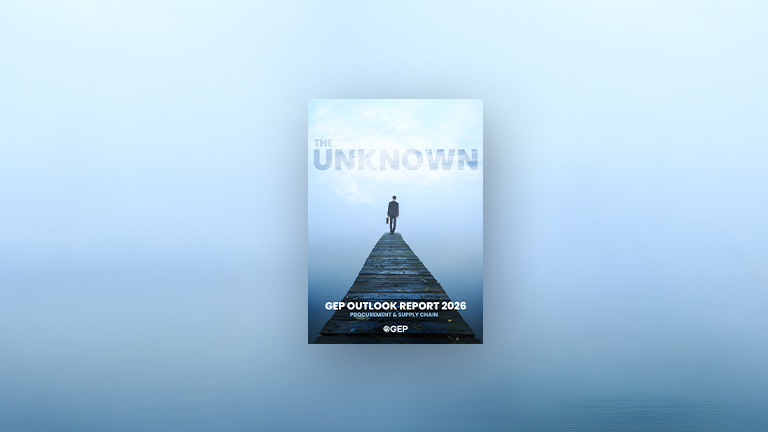
The Real Impact of AI on Vendor Management (And Why It Matters Now)
- AI isn’t just a flashy add-on—it helps you manage vendors faster, smarter, and with way less manual effort.
- The secret to getting started? Clean your data, start small, and use early wins to build momentum.
- With AI agents quietly working in the background, your team can finally focus on the big stuff—like strategy, relationships, and growth.
October 03, 2025 | Procurement Strategy 6 minutes read
You know already that procurement is no longer just about negotiating the best price or getting things delivered on time. Now, it’s about building resilient, agile supply networks that can handle disruption, meet ESG goals, and adapt fast. And if you're still trying to juggle that with spreadsheets, emails, and manual processes? You’re already behind.
That’s why AI-powered vendor management isn’t just a buzzword. By bringing artificial intelligence into how we onboard, monitor, and manage suppliers, procurement teams can shift from firefighting to future-proofing. The best part? You don’t need to reinvent everything from scratch. You just need to know how to use AI to your advantage. So let’s break it down.
What is Vendor Management?
Think of vendor management as the engine that keeps your procurement function running. It’s the process of finding the right suppliers, onboarding them, keeping tabs on their performance, and optimizing those relationships over time. Done right, it can deliver major value—lower costs, fewer risks, better outcomes.
So how do you actually make it work in today’s world? Start by grouping your vendors based on how critical they are, how much you spend with them, or how risky they might be.
Then build a consistent onboarding process that doesn’t change every time you bring someone new in. Make sure you’re tracking key metrics like delivery performance, cost accuracy, and quality. And here’s the kicker—don’t wait until something breaks to review things. Set a rhythm for quarterly or annual reviews and act on what the data tells you.
Get that structure right, and you’ve got a strong foundation. AI just builds on it—making the process faster, smarter, and way more scalable.
Talk to Our Expert
Streamlining Vendor Management with AI
Let’s talk about how AI fits into this picture. It’s not just a shiny tool to throw on top. It’s a mindset shift. It takes what’s slow and manual and makes it intelligent and scalable.
1. Data Collection and Contract Analysis
No one loves digging through contracts. And yet, missing one clause or expiry date can cost you. This is where AI thrives. Tools with Optical Character Recognition (OCR) can scan and read your vendor documents in seconds. Natural Language Processing (NLP) models then step in to pull out the renewal terms, payment conditions, and liability clauses and organize them so you don’t have to.
Even better? AI can flag if something looks off. Like mismatched banking details. Or missing compliance info. Or a contract that’s about to auto-renew without your signoff. So instead of sifting through paperwork, you’re spending your time making decisions.
2. Enhancing Supplier Networks
AI doesn’t just help you manage your suppliers, it helps you grow the right network. Feed in your supplier data—delivery times, quality scores, responsiveness—and AI will show you who’s crushing it and who’s putting your supply chain at risk.
It’ll even recommend when it’s time to consolidate vendors, where you might have redundancy, or if there’s a stronger supplier out there you haven’t considered. You’re not just tracking performance anymore—you’re strategically shaping your vendor base for long-term success.
3. Reducing Manual Workloads
This might be the biggest win of all: AI saves your team from drowning in repetitive tasks. Think vendor FAQs—where’s my invoice, when’s my next payment, how do I upload this doc. AI helpdesks can answer most of that instantly.
Need to update certifications or validate tax forms? AI can do that. Want to automate reconciling purchase orders? Done. Suddenly, your team has time to think strategically instead of just keeping the lights on.
Challenges of Implementing AI in Vendor Management
Of course, no transformation comes without a few bumps. Let’s talk about the common challenges and, more importantly, how to overcome them.
1. Data Quality and Integration
You can’t feed junk into AI and expect gold to come out. That’s why step one is always getting your data in shape. Audit your vendor master list—clean up duplicates, complete missing fields, standardize formats. Then make sure your systems talk to each other. If your ERP, contract system, and procurement tool are in silos, AI’s going to struggle.
Set up a centralized, clean, structured data environment. That’s the foundation AI needs to shine.
2. Cost of Implementation
Yes, there’s an upfront cost—but it’s not just a tech expense, it’s an investment in efficiency. Start by calculating how much time your team currently spends on things like onboarding, reviewing performance, or handling compliance. Then estimate what you’ll save by automating even half of that.
The smart move? Start small. Pilot it in a high-volume or high-risk area. Track what you save. Use those wins to build momentum—and justify broader rollout.
3. Resistance to Change
Let’s be real—people can be skeptical of new tech. Some worry about being replaced. Others just don’t want to learn something new. The key here is inclusion. Bring your team into the process early. Let them test-drive the tools. Train them with real-world examples.
Most importantly, show them how AI takes away the boring stuff so they can focus on the work that actually matters. When people feel supported, they get on board.
4. Ethical and Regulatory Concerns
Anytime you’re dealing with AI and supplier data, you’ve got to play by the rules. That means GDPR compliance, data privacy policies, and transparent AI models you can explain.
Make sure every AI decision—whether it’s scoring a supplier or flagging a risk—is auditable. Keep a close eye out for bias, too. A model that worked great last year could drift and start skewing results. So stay on top of it. Ethical AI builds trust—with vendors, regulators, and your own team.
Ready to Elevate Your Procurement Processes?
Discover how leading organizations are building smarter, more resilient procurement teams—starting with the right pillars.
How does AI enhance and optimize vendor management in procurement?
AI’s real magic lies in its agents—these behind-the-scenes digital assistants that handle specific tasks and never sleep.
1. Supplier Performance Agent
This agent monitors all your supplier KPIs—delivery times, quality issues, service feedback—and raises flags when things dip below your standards. It also suggests what to do about it. Maybe that vendor needs a meeting. Maybe it’s time to renegotiate. Either way, it gives you a heads-up and a plan.
2. Collaboration Agent
Ever lost track of an email thread or missed a document upload? This agent fixes that. It helps onboard vendors, routes requests to the right person, keeps conversations in one place, and makes sure nothing slips through the cracks.
3. Cost Analysis Agent
You’ll love this one. It analyzes pricing trends across vendors, uncovers hidden spend, and suggests better options. If someone’s charging 10% more than market rate, the AI will catch it. If you’re buying the same item from five vendors? It’ll flag that too.
4. Compliance Monitoring Agent
This agent keeps tabs on expiring certifications, ESG documentation, and legal requirements. It’ll give you early warnings and even assign health scores to each vendor. No more scrambling at the last minute before an audit.
5. Feedback Analysis Agent
You know those meeting notes, survey results, and casual comments people leave about vendors? AI reads them. It identifies patterns—slow delivery, poor support, great communication—and gives you an insight layer beyond just numbers.
Providing an AI-enabled interactive experience
You know that vendor relationships are two-way streets. If working with you is easy, vendors will be more responsive, more engaged, and more reliable. Simply put, AI helps create that relationship.
Set up self-service portals where vendors can get answers, update info, or see what’s missing—without sending five emails back-to-back. Offer personalized dashboards based on the type of vendor they are. Tier 1 suppliers don’t need the same reminders as one-time contractors. And track satisfaction too—because their experience is a leading indicator of how well they’ll perform.
It’s like customer experience, but for suppliers. And it makes a real difference.
The Future of AI in Vendor Management
AI-powered vendor management is already here. The teams using it are faster, sharper, and more effective. They spot problems before they happen. They build stronger supplier relationships. And they spend their time where it counts.
You don’t have to do it all at once. Start small. Clean your data. Pilot something practical. Let your team get comfortable. But start now—because the future of vendor management isn’t manual. It’s AI-powered.
Ready to Transform Vendor Management with AI?




